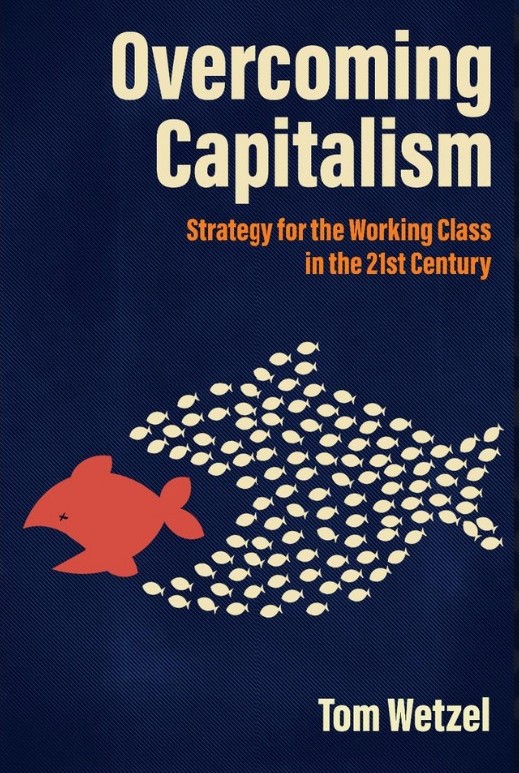The big rail carriers have used their ownership of the railways with a total focus on the bottom line, forcing workers to be on call at all times, with no guaranteed days off. They also have pissed off shippers, using the same arbitrary ownership power to deny them reliable service. Five day a week pickups of cars can be suddenly cut to three or denial of service. This is why Railroad Workers United — a cross-craft worker network — has proposed nationalization of the infrastructure — tracks and so forth. Just before the Democrats — with the support of 79 Republicans — passed strike-breaking legislation forcing them back to work — as if they were slaves — Railroad Workers United issued the following press release. “Under the terms of the Railway Labor Act (RLA), Congress has the option to take a wide variety of actions when faced with a situation like what we are seeing in this round of bargaining. According to RWU Treasurer Hugh Sawyer, “Joe Biden blew it. He had the opportunity to prove his labor-friendly pedigree to millions of workers by simply asking Congress for legislation to end the threat of a national strike on terms more…
As the Communists gained control in the Russian revolution, they gradually suppressed all other left-wing political organizations, between 1918 and 1921. This was then encapsulated in the policy that Lenin and Trotsky called “the dictatorship of the party.” Often this is justified by referring to the civil war situation. I don’t think this is an adequate explanation. We can see this if we look at the revolution that unfolded in the part of Ukraine know as the “Left Bank” (as viewed from Moscow) of the Dniepr river — the area around the present-day cities of Kharkiv and Dnipro. The revolution in this area had taken a somewhat different path than in other areas of the Russian Empire. For one thing, the Bolshevik party had almost no influence there. The soviets and revolutionary groups there had eventually come together in a series of people’s congresses in 1918–1919. The congresses brought together delegates from peasant communities (on the principle of one delegate for every 3,000 residents) and worker committees, unions and local soviets. The largest of these congresses, in 1919, had delegates representing 1 million people. These congresses authorized the formation of a Revolutionary (or “Insurgent”) army of Ukraine. Nestor Makhno was…
By Tom Wetzel This post is based on Chapter 10 in Overcoming Capitalism. A major contribution of Marx to the socialist movement was his analysis of the structure and dynamics of the capitalist regime or social formation. The influence of Marx’s social theory went beyond the self-avowed “Marxist” parties and intellectuals, and had an influence on the broader socialist movement which has always included a variety of different viewpoints and ideas about strategy and social change. Looking at the long arc of history, Marx distinguishes various “modes of production” that have existed since the emergence of states and systems of class oppression and exploitation. The idea here is a kind of hypothesis about how we understand the dynamics of social struggles and changes. A “mode of production” is a social structure that governs production — the way the society is structured to make a living, producing the things that are needed in a society at a given time. I follow G.D.H. Cole in interpreting Marx as a realist. In the realist approach to explanation of events and changes over time, two causal components are necessary. There is the course of events that provide the triggers for new events and changes….
Juristac is the indigenous name for a location in the coastal foothills of California near Gilroy. The site is located on the 403 acre Sargent Ranch. After the Sargent Ranch went bankrupt, a firm bought the ranch and now wants to develop a massive sand and gravel pit on the site — an action that would be devastating for wildlife and destroy the natural beauty of a site that has great significance for the Ahma Mutsun Tribal Band. The Ahma Mutsun Tribal Band are descendants of the indigenous Ohlone-speaking tribe who lived in that part of California at the time of Spanish conquest. Juristac was in roughly the center of the territory of the Mutsun tribe which stretched in the early 1800s from the Pajaro River valley around Watsonville through Gilroy to San Benito County. At the time of Spanish conquest the Mutsun people lived by “proto-agriculture” — cultivating certain plants and engaging in stewardship practices to protect oak and other native forest plants. Juristac has great significance for the descendants of the Mutsun tribe as this was the location where the tribe held their celebrations and religious rituals. The Ahma Mutsun Tribal Band put on a well organized demonstration…
The trajectory of the United Auto Workers union illustrates the consolidation of top-down control in national unions in the USA in the decades after World War 2. A vast movement of hundreds of thousands of workers forming new independent unions unfolded in 1933–34. Another expression of this drive for self-organization from below was the creation of 1,734 AFL “federal locals.” These were local industrial unions that were not affiliated to any international union. They were directly attached to the AFL national office. Most were in the auto and rubber manufacturing industries. A.J. Muste estimated the auto industry federal locals had 60,000 members in Detroit and 150,000 elsewhere in 1934. The United Auto Workers union (UAW) came out of this movement. The problem with the “federal locals” was the way the AFL kept them on a tight leash. As Edward Levinson put it in Rise of the Auto Workers, “These federal locals turned out to be about as worthless as the company unions. They…could not bargain, strike, or draw up a contract for themselves.” When the auto industry federal locals demanded a national strike in March 1934, the AFL top leaders yielded to FDR’s requests for a postponement and then accepted…
By Tom Wetzel “The labor movement today is in miserable shape, probably worse than in any period of labor history,” writes Joe Burns. To get out of this situation and rebuild unionism as an effective fighting force, Burns proposes a revival of “class struggle unionism” where unions are seen as a vehicle of direct, worker-led struggle against the owning class, whose interests are flatly antagonistic to the interests of workers. Since World War 2, a whole legal cage of repressive labor laws and unfavorable rulings of the elite judiciary have been crafted to block workers from legal use of the most effective tactics, such as secondary boycotts, workplace occupations, and effective strikes that shut down workplaces. Burns proposes a revival of these class struggle tactics, and thus labor organizations must figure out how to roll over injunctions and violate unjust laws. The book is both a clearly-written proposal for a new direction and a look at the dominant approaches in the AFL-CIO-type unions. Burns explains class struggle unionism by contrasting it with two other approaches — traditional business unionism and a newer approach that Burns calls “labor liberalism.” Labor liberalism is a kind of evolution from the older business unionism…
By Tom Wetzel Back in the 1860s the first international association of unions was committed to the idea that working people could change the society, and get out from under the oppressive power of the owners and their institutions. They said “the emancipation of the working class must be the work of the workers themselves.” The working class is nowadays a majority of the population — a highly diverse population with groups subject to various conditions such as specific forms of discrimination for various sub-groups. How could the working class actually come together, build solidarity among the various sub-groups of the oppressed majority, and organize itself to oust the owning and managing classes from their power over us? This is where strategy comes into play. My main focus in this book is on the strategies and tactics that various people on the radical left in recent decades have proposed for shifting us away from capitalism — achieving liberation from this ecocidal and oppressive system.An inspiration for me in this effort was Bertrand Russell’s little book, Roads to Freedom, written in 1918. Russell had a chapter devoted to each of the main radical tendencies of that era in Britain — Marxism,…

